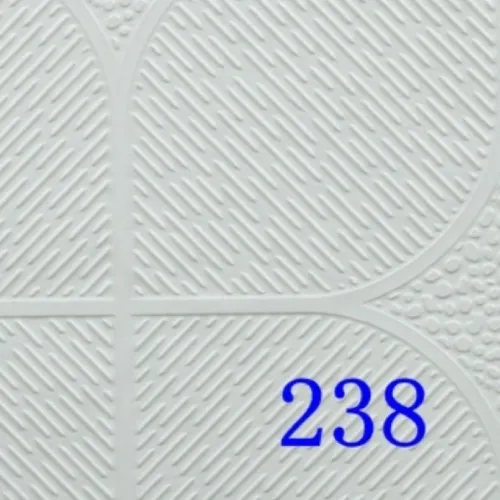Nov . 11, 2024 17:49 Back to list
difference between gypsum and pvc ceiling
Understanding the Differences Between Gypsum and PVC Ceilings
When it comes to interior décor and construction, the choice of ceiling material is crucial for both aesthetic appeal and functionality. Two popular options include gypsum and PVC (polyvinyl chloride), each offering unique benefits and drawbacks. In this article, we will delve into the differences between gypsum and PVC ceilings to help you make an informed choice for your next project.
Material Composition
Gypsum ceilings are primarily made of gypsum board, which is a natural mineral composed of calcium sulfate dihydrate. Gypsum boards are lightweight, fire-resistant, and provide excellent sound insulation. They are often finished with paint or other decorative materials, allowing for a range of design options.
On the other hand, PVC ceilings are made from synthetic plastic materials. PVC panels are lightweight and come in various colors and designs, often mimicking the appearance of traditional materials such as wood or stone. Unlike gypsum, PVC does not require painting, as it comes with a glossy finish that is easy to maintain.
Installation Process
The installation processes for gypsum and PVC ceilings differ significantly. Gypsum boards must be mounted on a framework of metal or wooden studs, and the joints need to be taped, filled, and sanded to create a smooth finish. This process can be time-consuming and often requires professional installation for best results.
In contrast, PVC ceilings are designed for ease of installation. They can be directly fixed onto the existing ceiling or installed using a suspension system. The lightweight nature of PVC panels allows for faster installation, often making it a preferred choice for DIY enthusiasts. Additionally, PVC does not require additional finishing, which can save time and labor costs.
Durability and Maintenance
difference between gypsum and pvc ceiling

When comparing durability, gypsum ceilings are relatively sturdy but can be susceptible to water damage and mold if exposed to high humidity or leaks. While they are fire-resistant, once compromised by water, they may need extensive repair or replacement.
PVC ceilings, however, are highly resistant to water and moisture, making them ideal for areas prone to humidity, such as bathrooms and kitchens. They do not warp or decay and can last for many years with minimal maintenance. Cleaning PVC ceilings is as simple as wiping them down with a damp cloth, making them more practical for many homeowners.
Sound Insulation and Aesthetics
Gypsum ceilings excel in sound insulation due to their density. If you're looking for a solution to reduce noise between rooms, gypsum is an excellent choice. The ability to add acoustic treatments also enhances their soundproofing capabilities further.
In terms of aesthetics, both materials offer impressive options. Gypsum ceilings can be finished in various ways, allowing for intricate designs, textures, and even integrated lighting. Conversely, PVC ceilings come in numerous colors and patterns, offering a modern look that can easily elevate the interior design.
Cost Considerations
The cost of gypsum and PVC ceilings can vary significantly based on quality, brand, and location. Generally, gypsum ceilings may have a lower initial material cost but can incur higher installation and maintenance fees over time due to their susceptibility to damage. PVC ceilings, while typically more expensive per square foot, can be more cost-effective in the long run due to decreased maintenance and easier installation.
Conclusion
Ultimately, the choice between gypsum and PVC ceilings depends on your specific needs, preferences, and budget. Gypsum ceilings are ideal for those who prioritize sound insulation and are willing to invest in installation and maintenance. In contrast, PVC ceilings offer moisture resistance, ease of installation, and minimal upkeep, making them a practical choice for a variety of environments. By carefully considering these differences, you can select the ceiling material that best suits your home or project.
-
Quality Ceiling Trap Doors & Access Panels | Easy & Secure AccessNewsAug.30,2025
-
Durable Ceiling T Grid Systems | Easy InstallationNewsAug.29,2025
-
PVC Gypsum Ceiling: Durable, Laminated Tiles for Modern SpacesNewsAug.28,2025
-
Pvc Gypsum Ceiling Is DurableNewsAug.21,2025
-
Mineral Fiber Board Is DurableNewsAug.21,2025
-
Ceiling Tile Clip Reusable DesignNewsAug.21,2025







